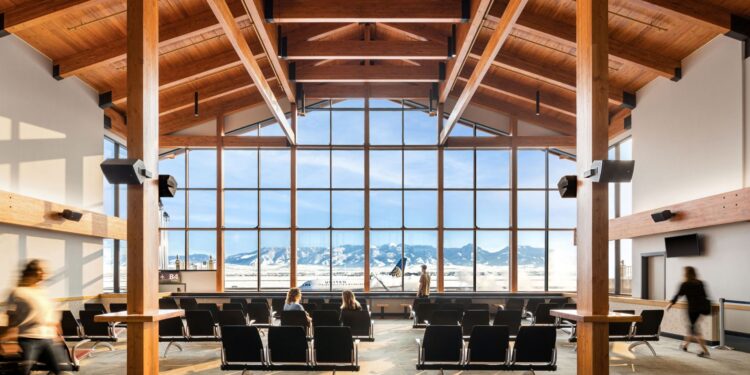When travelling around the world, airports are never the goal destination; however, many have left lasting impressions and can create an amazing first impression of the countries and cities when arriving. We have identified our top eight most exciting and beautiful airports across the world.
Heydar Aliyev Airport, Azerbaijan
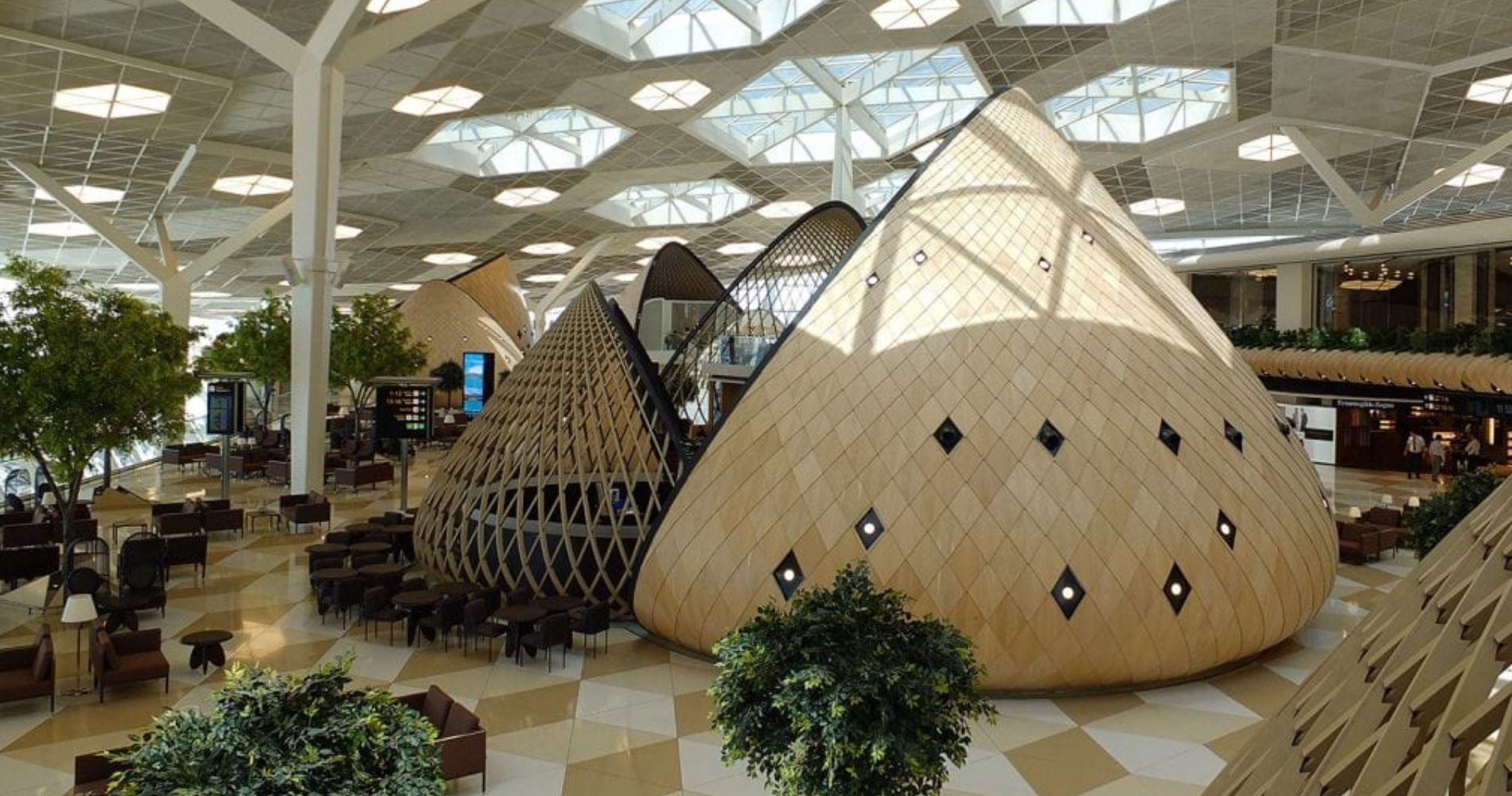
One of Azerbaijan’s five main international airports, Heydar Aliyev Airport, is situated about 20 kilometres east of Baku, the nation’s capital. In 2004, Heydar Aliyev, the former president of Azerbaijan, inspired the airport’s renaming.
The airport takes inspiration from the AZAL logo, flag carrier and largest airline in Azerbaijan, into the design of the building’s shape as well as using unconventional curves internally to form a space that reflects the country’s culture and geographic features.
The use of natural wooden, stone, and textile materials have been used to create bespoke wooden cocoons known as ‘Salam Lounges’ exclusively for business-class customers. These cocoons house shops, cafes, and bars and allow the customers a certain amount of peace and privacy while they wait for their flights. A further feature to allow more of Azerbaijan to break into the airport is the hexagonal cut outs in the lightweight steel roof allow natural light to flow into the terminal while regulating temperature.
Incheon Airport, South Korea
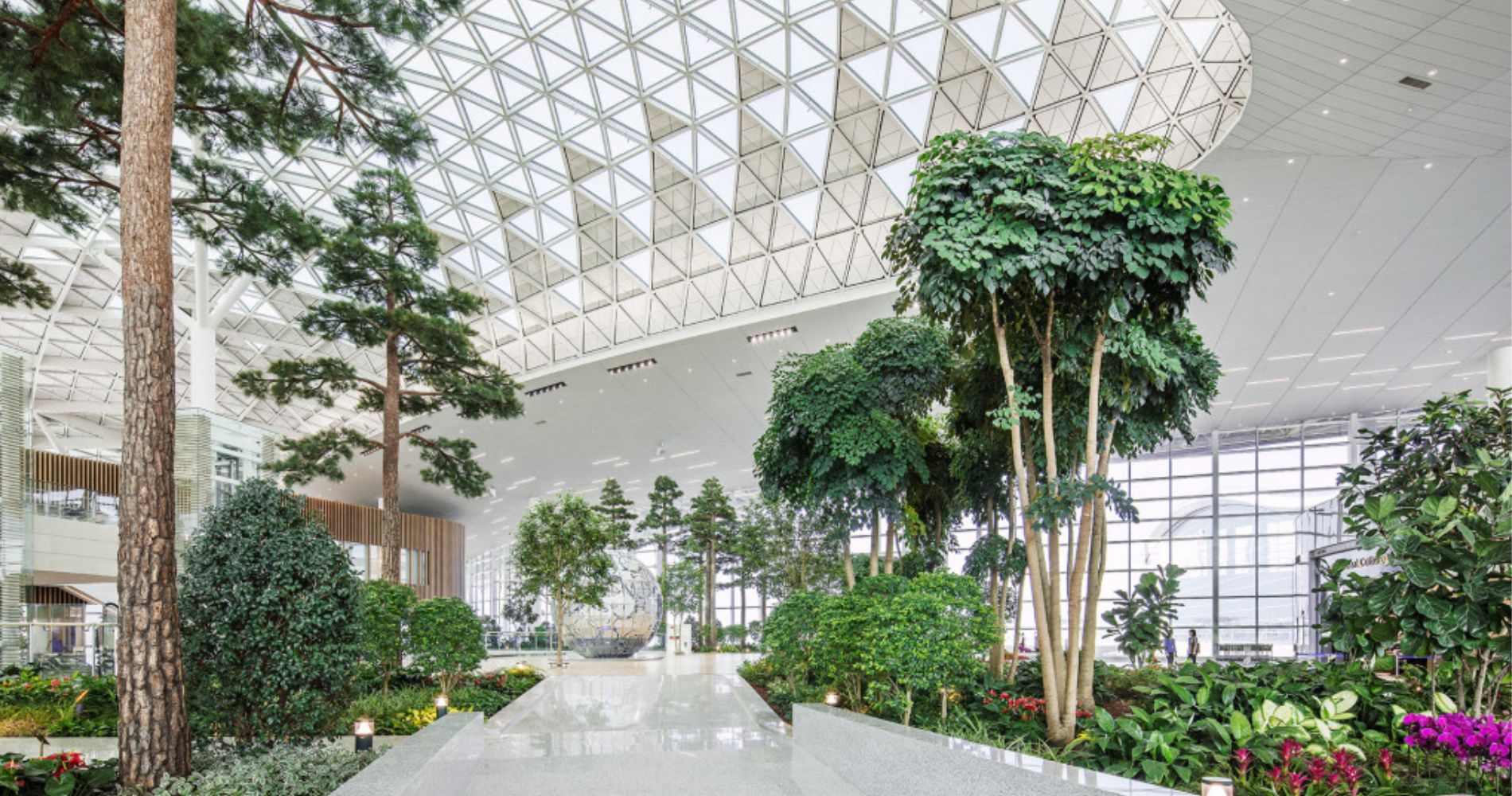
Incheon Airport, the biggest and busiest airport in South Korea, has received numerous awards over the years. In 2020, it was named the World’s Best Transit Airport and the World’s Best Airport Terminal.
The first feature noticed when arriving at the airport is the unique ‘ribbon’ roof, which funnels sunlight into the building in strategic areas where the ribbons twist open and close. The terminals are all encased in a blue hue that is in reference to the traditional colour of Korean roof tiles, taking into consideration the national culture within the confines of the airport.
Incheon Airport is known as one of the greenest in the world, with seven gardens that can be visited and enjoyed by airport users. One garden, titled The Star Garden, is known as the most impressive, with over 150 species of plants including flowers, ferns, and bamboo, as well as an outside balcony area to enjoy a different view of the airport.
Koh Samui Airport, Thailand
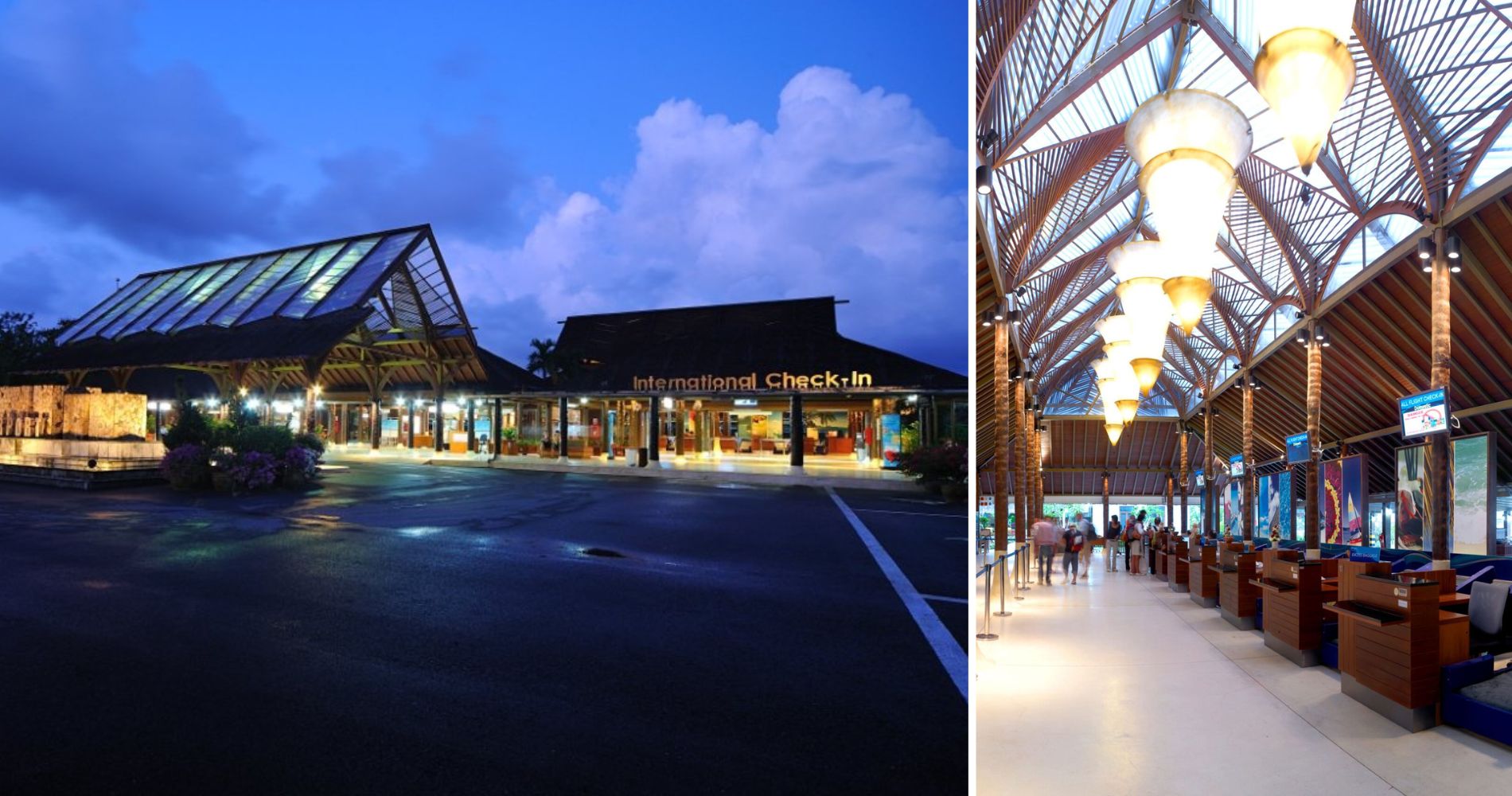
Set on the beautiful island of Koh Samui in Thailand, Koh Samui Airport is frequently described as “the most beautiful airport in the world”. Originally built in 1989, the airport had a 500 million baht ($15, 000,000) expansion programme actioned between 2004 and 2007.
The island airport has been designed to fit into its surroundings by using local materials such as palm, wood and rattan. The entirety of the airport is open air to negate the need for air conditioning but also to fit within the contemporary Thai/Polynesian design.
Koh Samui Airport has received multiple awards for its design, most notably first place in the Siam Architects-sponsored Outstanding Architecture competition in 1998 and the Board of National Environment Award in 1989 for environmental protection and awareness in aviation.
Adolfo Suárez Madrid-Barajas Airport, Spain
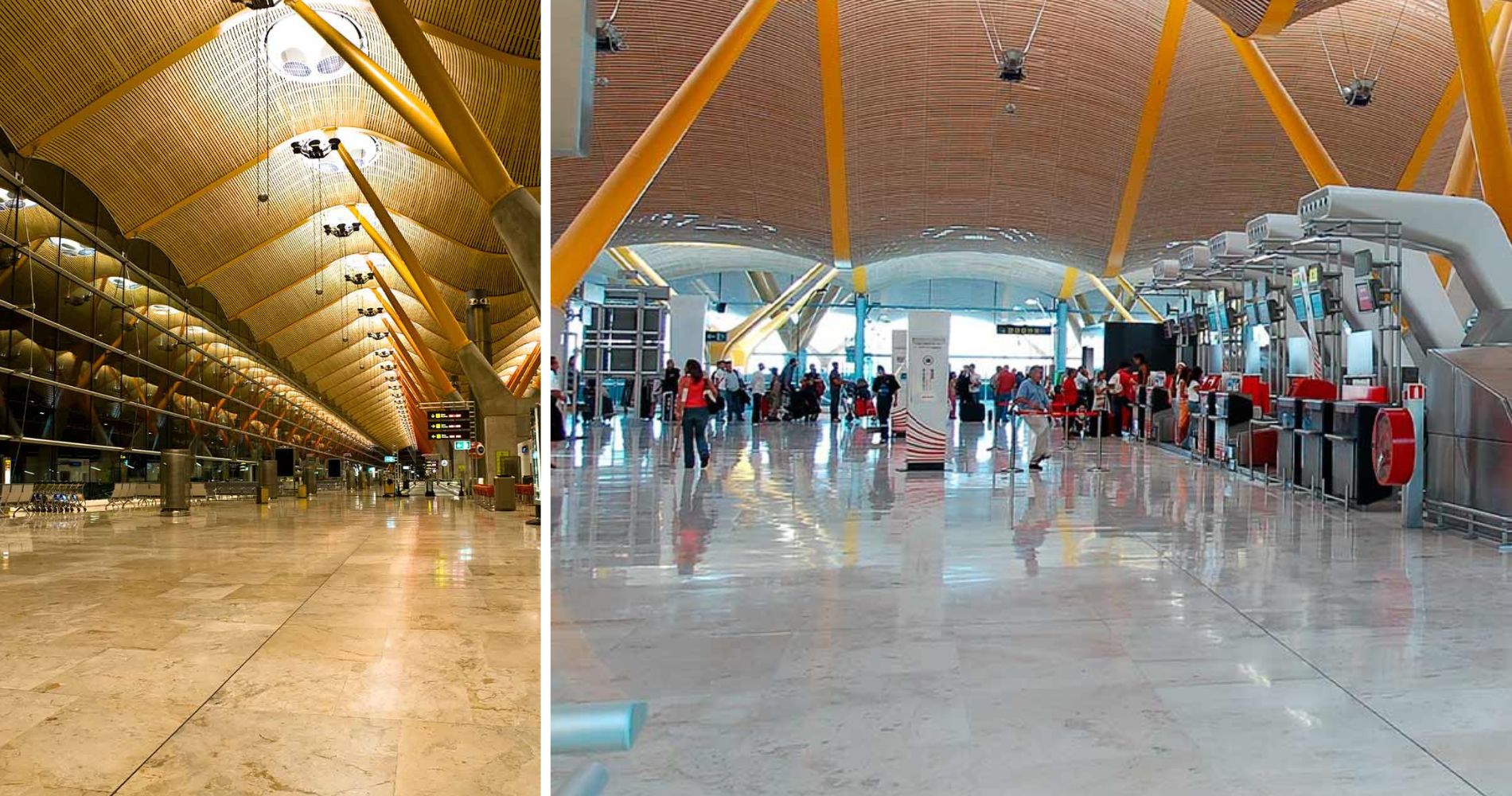
Named after the former Spanish Prime Minister Adolfo Suárez, the international airport of Madrid is the largest and most important aviation hub in Spain and an important European hub for flights to Latin America.
Terminal 4 opened in 2006 and is renowned for its beauty. The new terminal, designed by British architect Richard Rodgers and Spanish architect studios Lamela, uses corrugated bamboo for the ceiling, mistral marble flooring, and bright colours that are a reflection of the Mediterranean landscape.
Although unveiled almost two decades ago, terminal four of Adolfo Suárez Madrid-Barajas Airport is considered one of the first airports to push the boundaries of design.
Changi Airport, Singapore
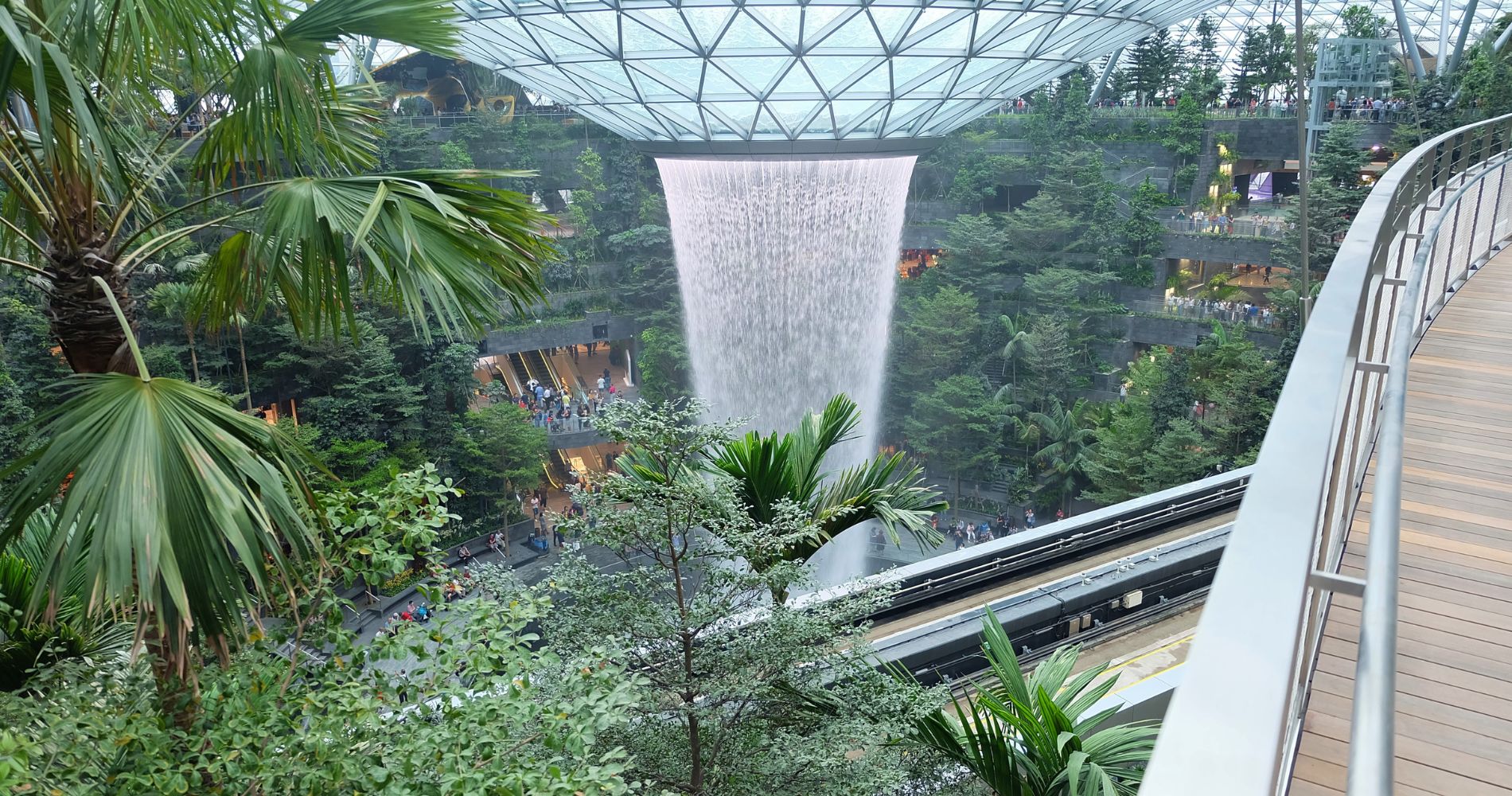
Singapore Changi Airport is one of the largest transportation hubs in Asia, with over 100 airlines operating to destinations across the globe. Not only the largest but known as the best in the world, the airport has been 5 star certified across all areas.
Changi Airport doesn’t only represent travel but also innovation in the world of retail design with the star of the airport being Jewel, a nature themed entertainment and retail complex linking the passenger terminals together. The centrepiece of Jewel Changi Airport is the world’s tallest indoor waterfall, the Rain Vortex which is surrounded by an impressive indoor forest.
Changi Airport Group have also created a personalised Orchid Tea scent for the airport, as studies have shown that smell is associated with memories.
Bozeman Yellowstone Airport, USA
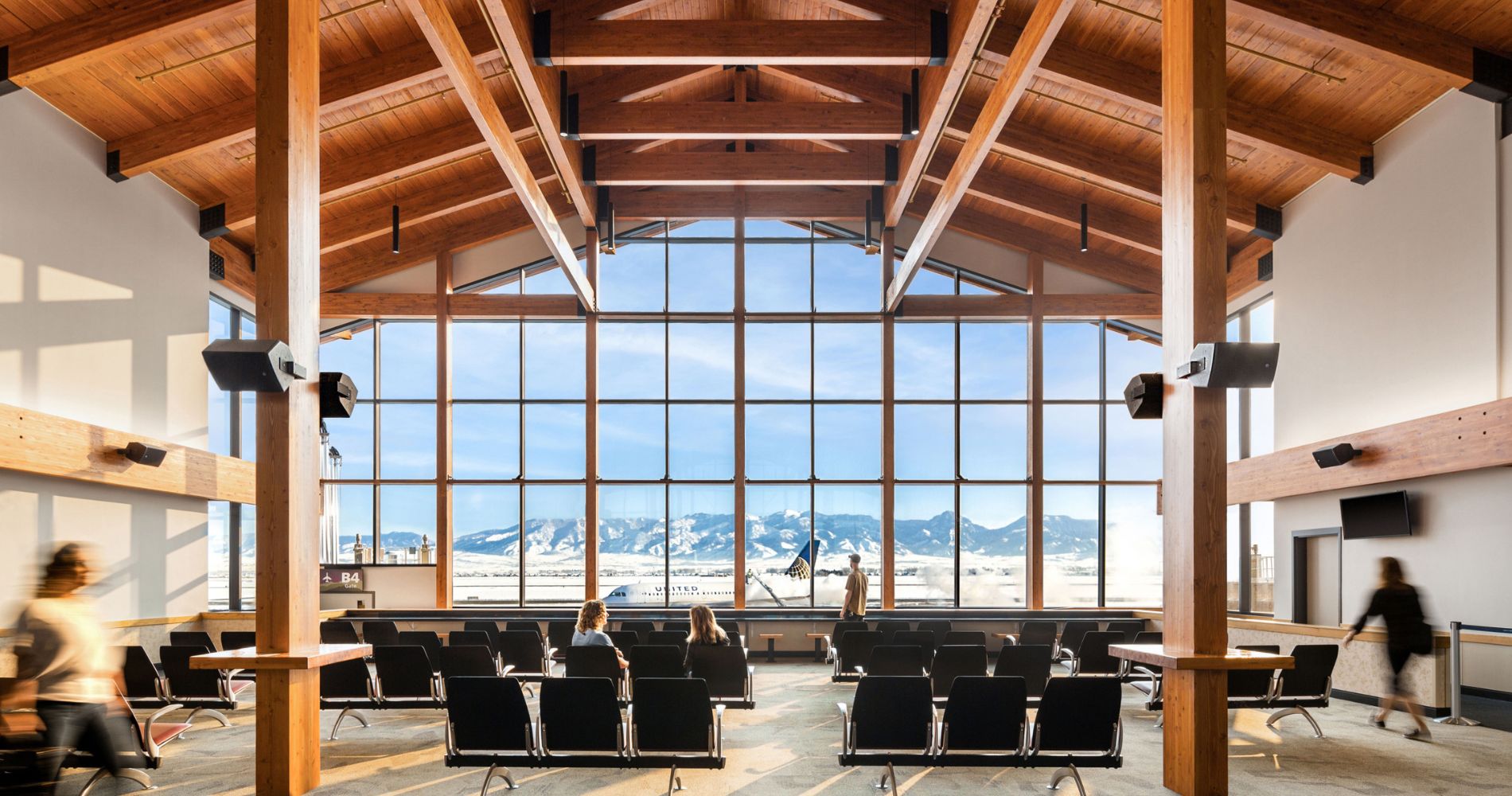
Bozeman Yellowstone International Airport is the largest airport in the state of Montana and is an important transportation hub connecting the world to Greater Yellowstone region.
The nearly 70,000sqf terminal expansion was designed by Heenebery Eddy, building on the characteristics of the existing airport. When designing the terminal, efforts were made to showcase the Bridger Mountain Range with large areas of glass to frame the amazing views. The exposed stone walls are made from material collected locally from the Gallatin Canyon all in effort to reference the geology and mountain ranges from the surrounding area.
The use of exposed wooden beams and cosy fireplaces are further additional touches that make the airport feel authentically peaceful.
Beijing Daxing International, China
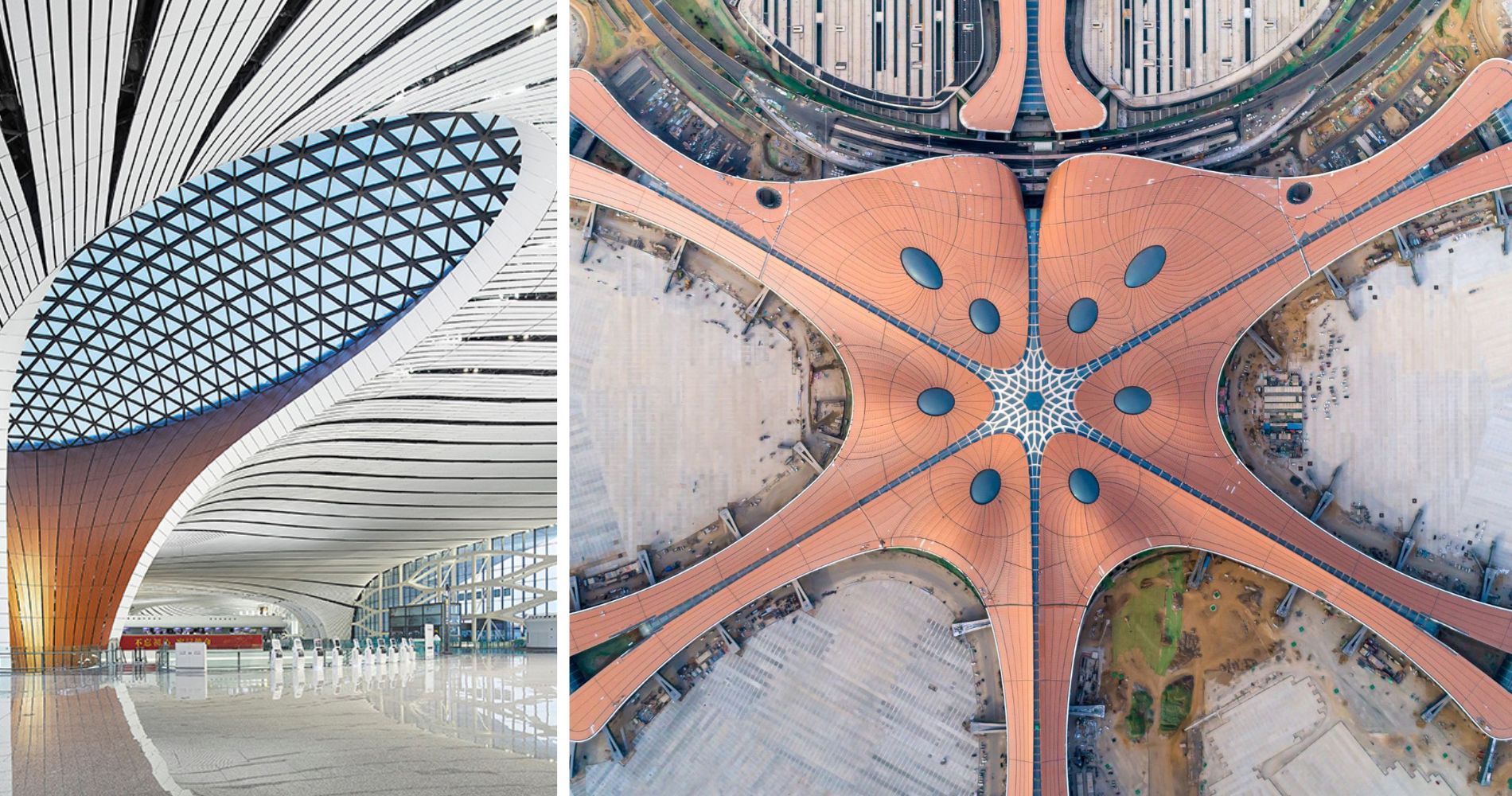
Opened in 2019 and costing approximately £13.4 billion to construct, the Beijing Daxing International has the world’s largest single-building airport terminal, nicknamed ‘the starfish’ due to its unusual shape. The airport is looking to expand to accommodate 100 million passengers and 4 million tonnes of cargo annually.
Designed by Zaha Hadid, the starfish shape is said to reflect Beijing’s interconnectedness. The design of the terminal guides all passengers seamlessly through the appropriate arrival, departure, or transfer zones towards the grand courtyard at its centre, a multi-layered meeting space at the heart of the terminal. The terminal’s six flowing forms, which stretch to the ground to support the building as well as allowing natural light to flow in to towards the central courtyard. This design is reminiscent of traditional Chinese architecture, which arranges interconnected spaces around a central courtyard.
In order to prevent flooding and mitigate the summertime “heat island” effect on the local microclimate, the airport also uses rainwater collection and a water management system that makes use of the natural storage, natural permeation, and natural purification of up to 2.8 million cubic meters of water in new wetlands, lakes, and streams.
Hamad International Airport, Qatar
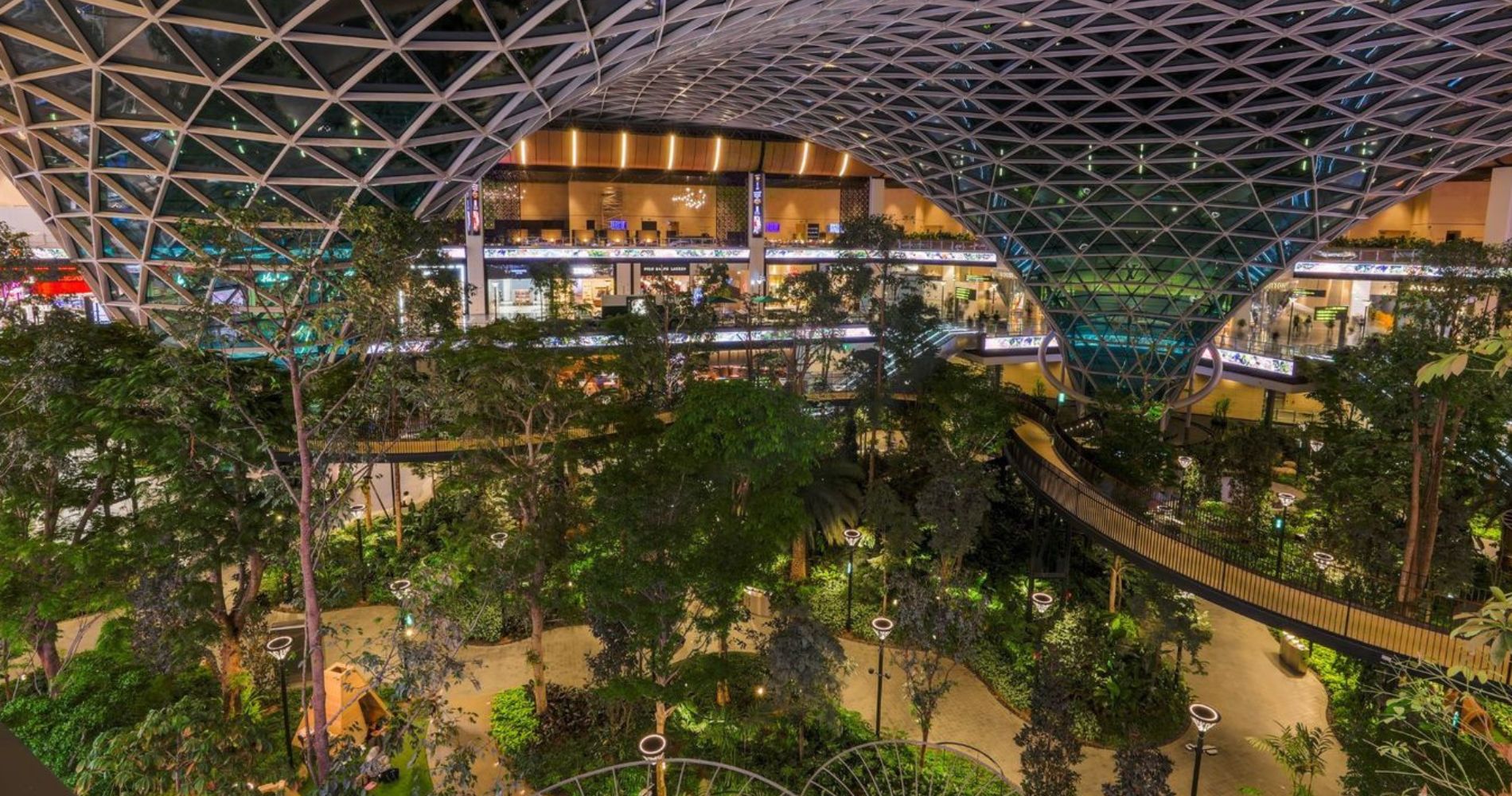
Hamad International Airport is an international airport in Qatar and the home base of the national flag carrier airline, Qatar Airways. In 2022, the airport unveiled the first phase of its expansion, with the main star of the show being The Orchard.
The 6,000-square-metre indoor tropical garden is located in the middle of the Qatar airport expansion’s shopping section. Travellers can enjoy the benefits of The Orchard’s landscape and the company of nature alongside 575 m2 of “moving water,” adding a refreshing ambience. More than 25,000 plants and 300 trees can be seen in the orchard, which was delivered to Hamad International Airport from sustainable forests in Malaysia, Thailand, Singapore, and other areas of the world. All of the plant species in the indoor tropical forest are protected by a high-performance glass canopy that is column-free and designed specifically to filter and regulate light for the plants’ survival and well-being.








